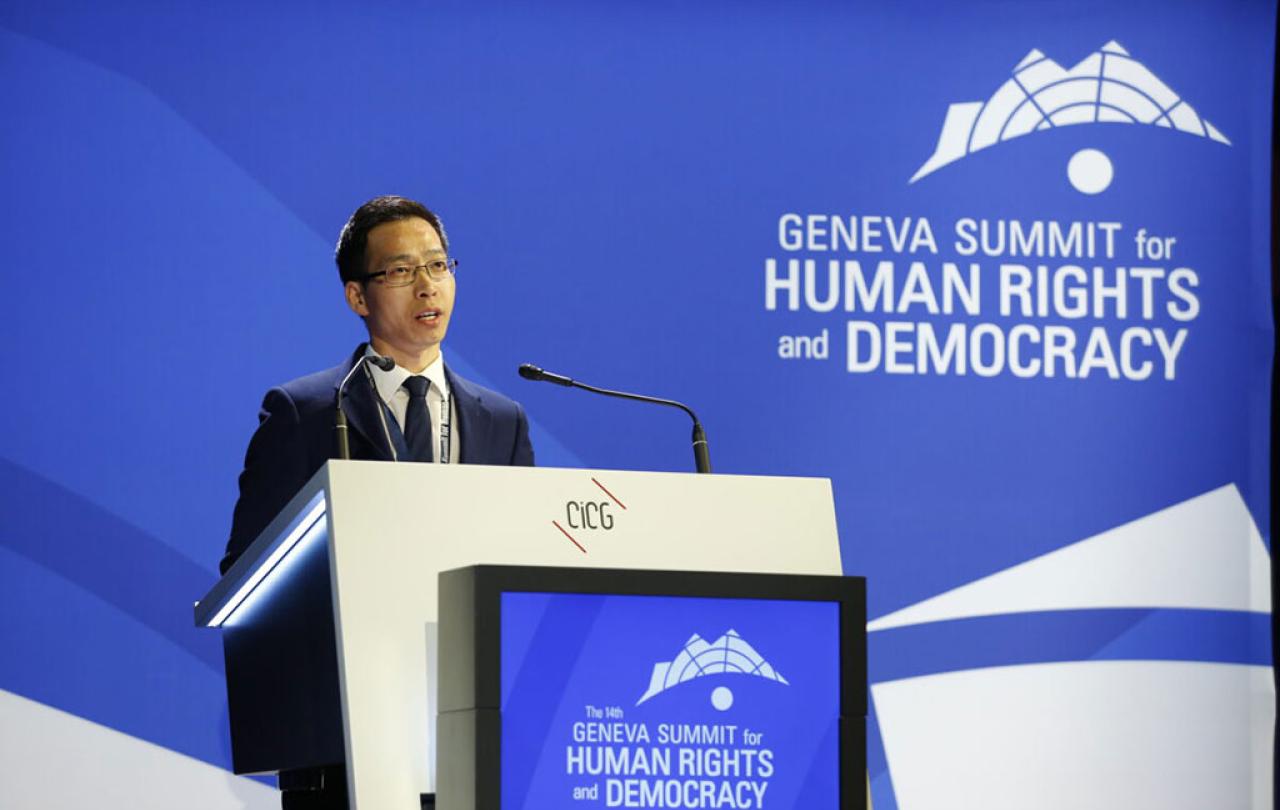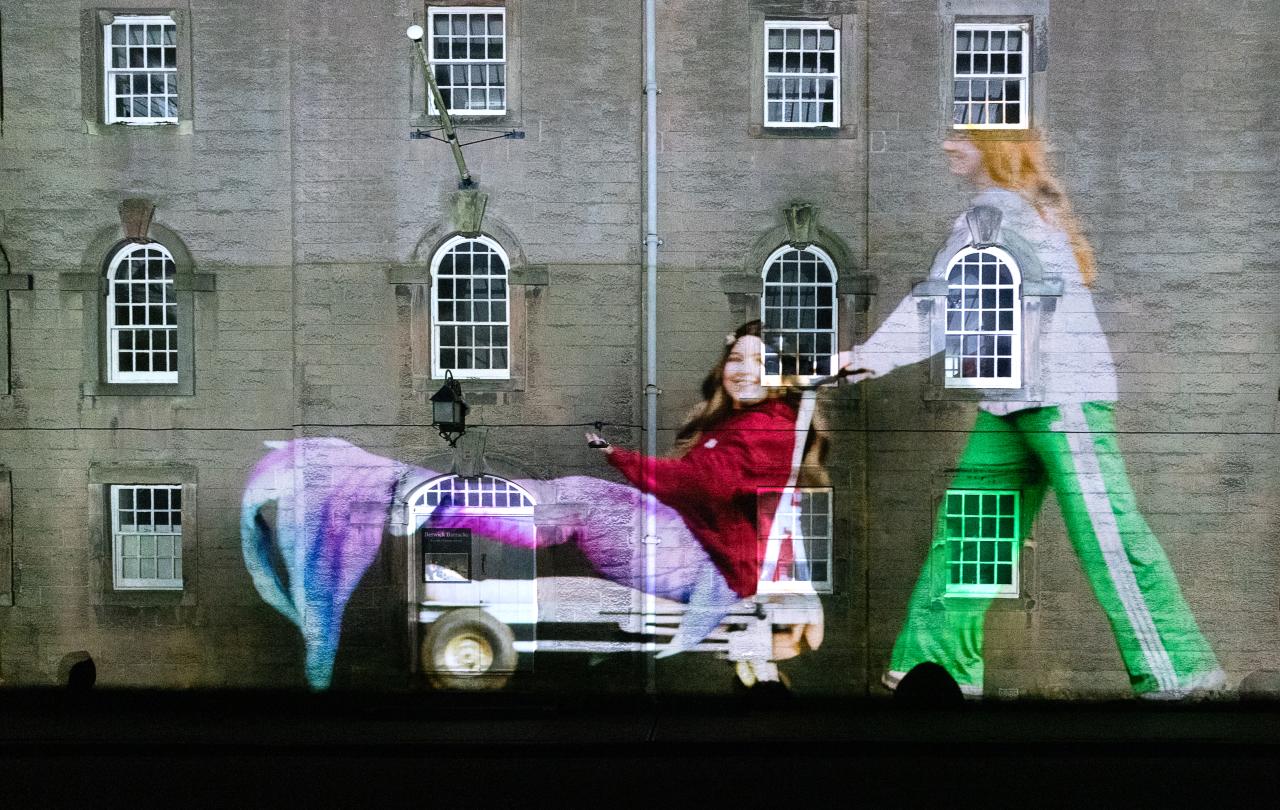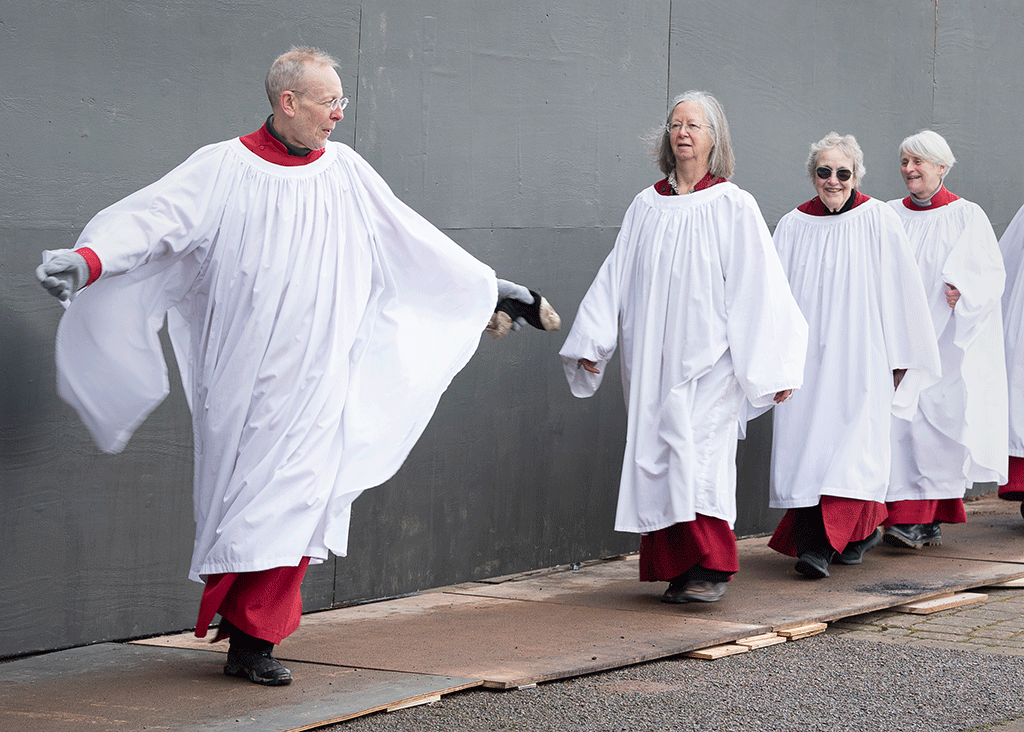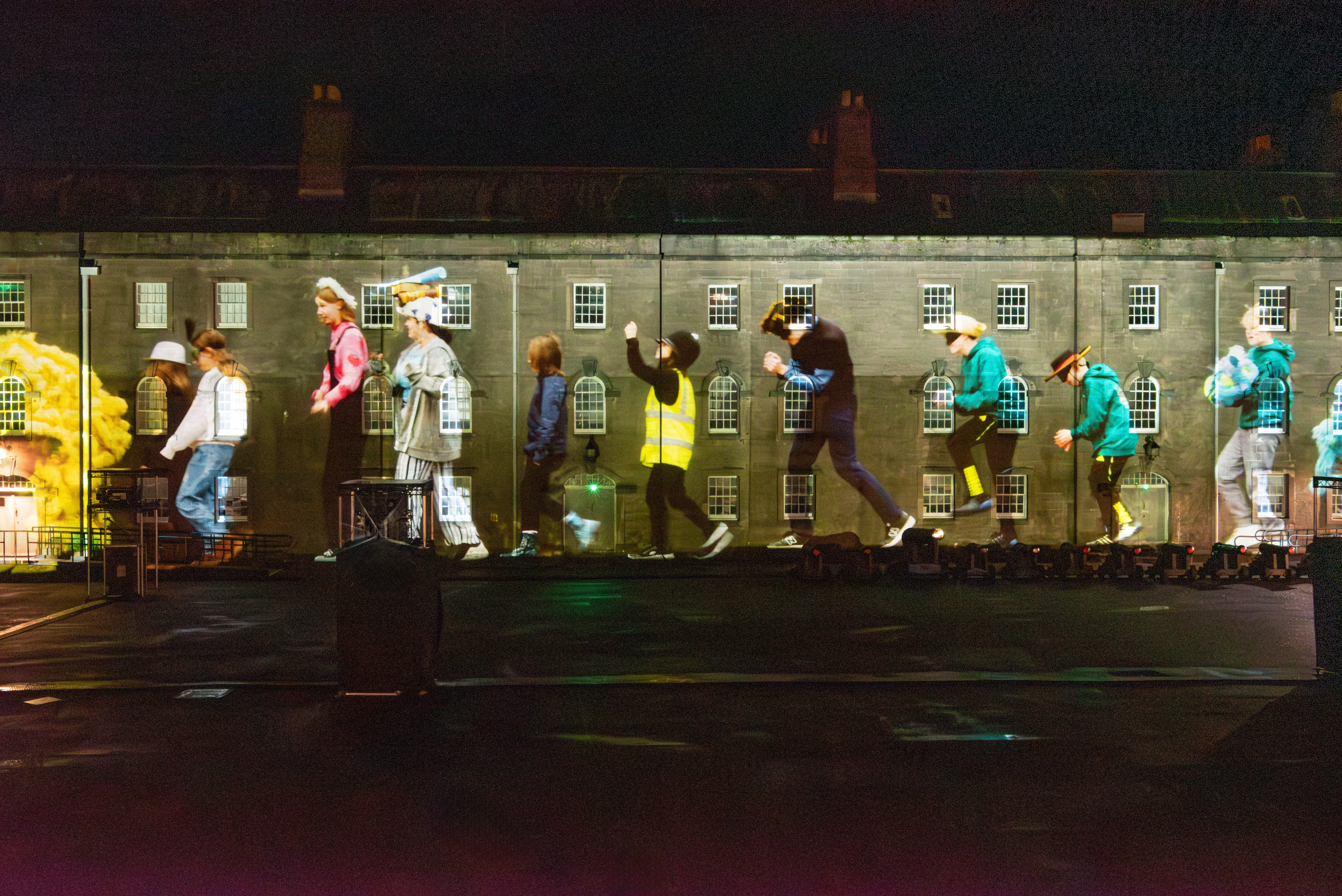
The UN Secretary-General, Antonio Guterres, has recently stated that North Korea must be held responsible for the grave human rights violations that they have carried out, suggesting that such justice could be secured through the International Criminal Court. In the report, they detail serious human right violations which occurred between July 2023 and May 2024, many of which are tied to a serious escalation in the repression of freedom of thought and belief. Such repression makes North Korea that most dangerous country to be a Christian in 2024, sitting at number one on the World Watch List.
I don’t know about you, but I find North Korea hard to get my head around.
And so, I was utterly captivated, completely horrified, and generally left speechless by Timothy Cho’s story of escaping North Korea, at the age of just seventeen. Now, living in the UK and working for the religious charity, Open Doors, as well as lobbying cross-party parliamentarians, Timothy is able to shed a rare light on the realities involved in living in, and leaving, North Korea.
Would you be able to tell me a little bit about how you managed to leave North Korea?
I actually escaped twice and was imprisoned four times, three of those imprisonments were in China and one in North Korea. I was sent back, along with the seventeen other North Korean refugees, while we were trying to escape.
During my first escape, I crossed the border to China and met a Christian missionary guy. He tried to help me cross into China safely, so I followed him to his house. I saw a Bible and a cross and realised that it was a Christian missionary’s house.
That was very scary for me, I thought he was brainwashed. I believed that Christians were kidnapping North Korean children and selling them into trafficking. And so, when I saw a few children in that house, my legs were shaking.
I thought the Bible was cursed.
And so I escaped from the house. I did not regard meeting that man as an opportunity provided by God. I ran away from it.
And I was then arrested at the Mongolian border with seventeen other refugees as we tried to cross into Mongolia. North Koreans, we’re born without a passport. We don’t know how to leave the country. We’re told that you should never leave the country, so, at the Mongolian border, all eighteen of us were arrested by Chinese military. There were two women in the group, a mother and a daughter, they quickly took something out of their backpack and buried it in the sand. I asked them later what it was, they told me that it was a Bible. It was too dangerous to be sent back to North Korea with it in their possession.
And we were sent back to North Korea.
I experienced horrific crimes; terrible things were happening right in front of my eyes. I still live with the trauma of it now. But I survived that horrific experience in the North Korean prison, I was the only one among the eighteen of us who got out of there.
And then you attempted to escape a second time?
Yes, by then I couldn't walk properly because of the terrible things that had happened in prison. It was tragic.
I considered going to the Mongolian border again, but I was massively traumatised from the previous attempt. So, I went to Shanghai. I heard someone could help me to cross the fence into an American International School there, where I hoped I could get support and hopefully get out of China.
So, I met with a few other North Korean refugees in Shanghai and we managed to get into the school with a piece of paper that read: ‘we are North Korean refugees. Please help us’.
But the school couldn’t help us and the Chinese police arrived to forcibly remove us. In front of hundreds of students, we were beaten and dragged away.
We were sent to the International Shanghai Prison.
That was my fourth imprisonment.
They were going to send me back to North Korea a second time. And there was no way I thought I would survive that. I would have been executed.
So, what happened?
In my cell were seven other inmates, all from different countries. As I was crying every night not eating properly, one of my inmates asked me - why are you crying every night?
They had never met a North Korean person, of course. So, they were very curious about me. The guy who came to me and asked what was wrong was a South Korean gangster - so we spoke the same language, and I was able to explain to him that I was probably going to be executed.
Everyone looked quite shocked - and they all asked me if they could pray for me. I said yes, but I didn’t actually know what prayer was. Every one of them had a different religion but the south Korean man brought me a Christian Bible and asked me, ‘have you ever read this book?’
Again, this was a book that I was terrified of, and so my legs were shaking. I told him that I had never read it, and that I didn’t want to read it. I told him that it was cursed
But he said, ‘you probably have some time here in this prison – why don’t you read it. It might give you some comfort’.
Then he told me that I could pray to God for my survival. I was so desperate, you can imagine – you’re in the darkest prison, thinking that you’re about to be killed. I had nothing to lose. But I didn't how to pray, so I asked him - How do you pray? And he told me that you simply say Amen at the end of your wishes. That's how I learned how to pray.
So, my first ever prayer, right in that moment was ‘God, I don't want to be killed. Amen’.
And I don't want to go back to North Korea. I want to get up from this prison. I prayed hundreds of these kinds of prayers. Very short. Very desperate. I wanted to survive.
And, eventually, praying that many times a day gave me a feeling of comfort. I began to lean on it. I was holding it like a rope. I was desperately praying, with everything within me, for weeks and weeks. But nothing was happening.
At first, I kind of thought that God was a man, like a very powerful man. The kind who could arrive on a helicopter and destroy the prison building. Like in an action film, that’s the only reference of escape I had. But nothing was happening. So, I told the gangster who gave me the Bible that God obviously doesn't exist. He lied to me.
Time was ticking. I was desperate.
I was a 17 year old boy, I didn’t understand God at all, but all I wanted was to survive.
About eight weeks later, two men visited me in the prison. At first, I thought they were from North Korea, finally forcing me back. But it turns out they were diplomats. One South Korean guy and one Westerner. They told me that China had made the very unusual decision to deport us to the Philippines with a diplomatic passport, not to North Korea.
This was completely out of the blue. I never expected that this would happen. That was the first and the last time that China had officially deported a group of North Korean refugees to a third-party country instead of sending them back to North Korea.
As it turns out, one of the school children at the International American school in Shanghai wrote to a local journalist about us because she was so traumatised at how she had seen us beaten and arrested. At the same time, other witnesses had written statements of what they witnessed and testified that what they saw in that moment was a crime against humanity.
This then caught the attention of the BBC, Washington Post and CNN, media outlets in Germany, South Korea, Japan. They all told our story and campaigned on our behalf, pressuring the Chinese Government. Then, many Christian and human rights groups watched that news. They protested in front of Chinese embassies all over the world.
I remember thinking - oh, this is how God has operated. I saw it straight away. Right in that moment, I needed to thank him.
One of the Bible scriptures I still remember reading during that prison stay was – ‘I will not leave you as orphans. I will come to you.’
I didn’t grow up with parents. They left, escaped to China when I was nine. I survived without parents, even though I was picking food on the floor and had no education. I suffered and struggled. And I complained about that a lot to God, even after he had rescued me and given me freedom. I had a lot of trauma, anger, hatred, all that. So many times I cried out to God, I shouted at him, I asked him – ‘why didn’t you leave me to die on the street? Then I wouldn’t have gone through all of this suffering.’
Every time when I prayed that to him, the only sentence he tells me in response is – ‘I love you, son’.
That’s an astonishing story. Thank you for sharing that. Since you’ve become a Christian, left North Korea and gained your freedom, what have you subsequently learnt about the hidden, underground, Christians in North Korea?
That my grandmother was a Christian, my father's mother. But she couldn’t ever share her faith with me.
Also, that Korea had experienced a spiritual revival in 1907. Evangelism swept through Korea at that time, and millions on people gathered in Pyongyang, which is North Korea today. Missionaries came over, even Billy Graham’s father-in-law went there as a missionary. They came, built schools, hospitals, universities, they were teaching English. In fact, members of the royal family were baptised by Billy Graham’s father-in-law.
My grandmother was a part of that revival generation of a Christians. The church has survived, underground, through decades of North Korean communist dictators.
People start reading this book (the Bible), and they find treasure in there, our daily life is in there. There are stories of economic hardship, persecution, suffering, oppression, anger, hatred. But to be found with the Bible is incredibly dangerous. People who smuggle the Bible are executed. When I was eleven, I watched a public execution. When they’re executing someone, they force the entire village to come out and watch it, and they force you to take your children. In fact, children have to sit on the front row. So, the man I saw executed when I was eleven, he was shot – first in the eyes, then the stomach, then the knees. I remember, my friends and I went and collected some of the bullet shells that were left on the floor. We thought it was normal. That man was accused of being a spy because he was found with religious materials.
They're very particularly against Christianity because the message liberates people.
Finally, this recent report from the UN Secretary General – you say that his recommendations are ‘noble aims’ but that they don’t quite go far enough. What would you like to see happen to bring about increased safety for the people in, and trying to leave, North Korea?
I’m now a Christian and human rights lobbyist, I encourage MPs to do something. The UK has always been influential in holding the flag for freedom of belief, in particular. So, what I suggest is that we have conversations with Chinese diplomats. China deported me to a third-party country; they can actually do that. They have the authority in their hands to make that decision. They don’t have to send people back to North Korea. They could even send them to South Korea.
Instead, hundreds of thousands of people are arrested and sent back to North Korea, even though China knows that these people will end up in prison camps. If they’re Christians, they’ll be executed.
So, I have a few recommendations. But this is something that the UK government can urge the Chinese government to do.









